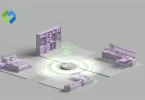Laravel depends on Composer to work correctly. It uses Composer to install and manage its components. This includes tools that add features like routing, caching, and authentication. Without Composer, setting up Laravel would be harder and more time-consuming. Composer makes it simple to update Laravel and keep everything running smoothly.
Table of Contents
Table of Contents
System Requirements for Composer
PHP Version Requirements
Composer needs PHP installed to function. The minimum version required is PHP 5.3.2, but it’s strongly recommended to use PHP 7.2.5 or higher. Newer versions provide better performance, enhanced security, and compatibility with modern packages. Before proceeding, ensure your PHP installation is up-to-date.
Necessary PHP Extensions
Certain PHP extensions must be enabled for Composer to work correctly. These include curl for handling internet requests, mbstring for managing multi-byte strings, and openssl for secure file downloads. Missing extensions can cause Composer to fail during installation or while downloading packages.
Supported Operating Systems
Composer is compatible with Windows, macOS, and Linux. On Windows, tools like Command Prompt or PowerShell are used for execution. macOS and Linux require a terminal to run commands. Regardless of the platform, ensure your system supports PHP and the required extensions.
Internet Connection
A reliable internet connection is essential for downloading Composer packages and updates. Composer pulls files from online repositories, so an unstable connection may disrupt the process or cause errors.
Downloading and Installing Composer
Downloading Composer
To get Composer, visit its official website at getcomposer.org. The website provides a detailed guide for downloading the installer file. For Windows, download the .exe file that simplifies the process. For macOS and Linux, you’ll need to execute terminal commands to fetch the installer script. Ensure you’re downloading the latest version for better compatibility and features.
Installing Composer on Windows
Double-click the downloaded installer file to begin. The setup wizard will guide you through the steps. Make sure it detects your PHP installation path automatically. If it doesn’t, manually specify the directory where PHP is installed. Once the installation completes, Composer will be available via Command Prompt. Restart your computer if needed to ensure the setup works correctly.
Installing Composer on macOS and Linux
Open the terminal and use the command below to download the installer script.
php -r “copy(‘https://getcomposer.org/installer’, ‘composer-setup.php’);”
Before running the script, it’s good practice to verify its authenticity with the hash provided on the official website. Then, install Composer with
php composer-setup.php
Finally, move the executable globally for easy access
sudo mv composer.phar /usr/local/bin/composer
This ensures you can run Composer from any directory.
Finalizing Installation
Once installed, verify it’s working by typing
composer –version
This will display the installed version, confirming a successful installation. If you encounter issues, check your PHP configuration or internet connection. Proper installation ensures Composer is ready for managing dependencies in your projects.
Verifying Composer Installation
Checking Composer Version
To verify that Composer is installed correctly, open your terminal or command prompt. Type the following command
composer –version
This command will display the installed version of Composer if the installation was successful. Ensure that the version matches the latest available on the Composer website to avoid compatibility issues.
Testing Basic Functionality
Run the command
composer
This will display a list of available Composer commands and usage instructions. If you see this, Composer is functioning correctly. You can now use it to manage packages and dependencies.
Resolving Common Issues
If the version command does not work or shows an error, double-check your installation steps. For Windows, confirm that the PHP path is added to the system’s environment variables. On macOS or Linux, ensure the composer.phar file is moved to a global directory like /usr/local/bin/composer.
Setting Up Laravel with Composer
Installing Laravel via Composer
To install Laravel, first ensure Composer is installed and working. Open your terminal or command prompt and navigate to the directory where you want to set up Laravel. Use the following command to create a new Laravel project.
composer create-project –prefer-dist laravel/laravel project-name
Replace project-name with your desired folder name. This command downloads the latest Laravel version along with its dependencies into the specified folder.
Configuring the Laravel Project
After installation, navigate into the project directory using.
cd project-name
Generate an application key by running.
php artisan key:generate
This key secures your application data and is stored in the .env file. Verify the .env file for database and environment configurations to match your requirements.
Starting the Development Server
To start your Laravel application, run the following command.
php artisan serve
This launches a local development server, usually accessible at http://127.0.0.1:8000. Open this URL in your browser to confirm the Laravel setup.
Managing Laravel with Composer
Use Composer to add packages or update dependencies. For example, to install a new package, run.
composer require package-name
To update Laravel and its packages, use.
composer update
This keeps your Laravel project optimized and up to date.
Managing Dependencies with Composer
1. Installing New Dependencies
To add new libraries or tools to your project, use the require command. For example
composer require package-name
Replace package-name with the name of the desired package. Composer will download and integrate the package into your project, updating the composer.json and composer.lock files automatically.
2. Updating Existing Dependencies
Keep your project up-to-date by using the update command.
composer update
This updates all dependencies to their latest compatible versions based on the constraints in the composer.json file. You can also update a specific package.
composer update package-name
Always test your project after updates to ensure compatibility.
3. Removing Unused Dependencies
If a package is no longer needed, remove it with the remove command.
composer remove package-name
This ensures your project stays lightweight and avoids unnecessary dependencies. The composer.json file will be updated to reflect the change.
4. Checking for Outdated Packages
To view outdated dependencies, run.
composer outdated
This command shows packages with newer versions available, helping you decide if updates are necessary.
5. Optimizing Autoload
Improve performance by optimizing the autoloader.
composer dump-autoload –optimize
This is especially useful in production environments to reduce loading times.
Troubleshooting Installation Errors
1. PHP Not Found or Incorrect Version
If Composer cannot find PHP or detects an incorrect version, ensure PHP is installed and properly configured. For Windows, check if PHP is added to the system’s PATH variable. On macOS or Linux, verify PHP is installed by running.
php -v
If needed, update or reinstall PHP to a version compatible with Composer.
2. Missing or Disabled PHP Extensions
Composer requires certain PHP extensions to work, such as curl, mbstring, and openssl. If these are missing or disabled, Composer will throw errors. Check your PHP configuration (php.ini) and ensure these extensions are enabled. Restart the web server or PHP service after making changes.
3. Permission Issues
On Linux and macOS, you may encounter permission errors when trying to install Composer globally. If you see a “permission denied” error, try running the command with sudo for elevated privileges.
sudo php composer-setup.php
Make sure the correct permissions are set for the Composer installation directory.
4. Composer Not Recognized in Command Line
If Composer commands aren’t recognized, ensure the composer.phar file is in the system’s PATH. On macOS or Linux, move Composer to a global location.
sudo mv composer.phar /usr/local/bin/composer
For Windows, run the installer again and ensure the PHP path is correctly configured during the setup process.
5. Network or Proxy Issues
If Composer fails to download packages due to network or proxy issues, check your internet connection. If you’re behind a proxy, configure Composer to use it by setting proxy settings in the composer.json file or via the command line.
composer config –global http.proxy http://proxy-server:port
Conclusion
Installing Composer for Laravel is an essential step for managing dependencies and streamlining development. By following the steps outlined in this guide, you can easily set up Composer and begin using it for your Laravel projects. Ensure your system meets the necessary requirements, and follow the installation process carefully.
Once Composer is installed, managing packages and updating dependencies becomes straightforward. Composer makes it easier to handle Laravel’s complex ecosystem and stay up to date with the latest features. With a few simple commands, you’ll be ready to develop your Laravel applications efficiently.














